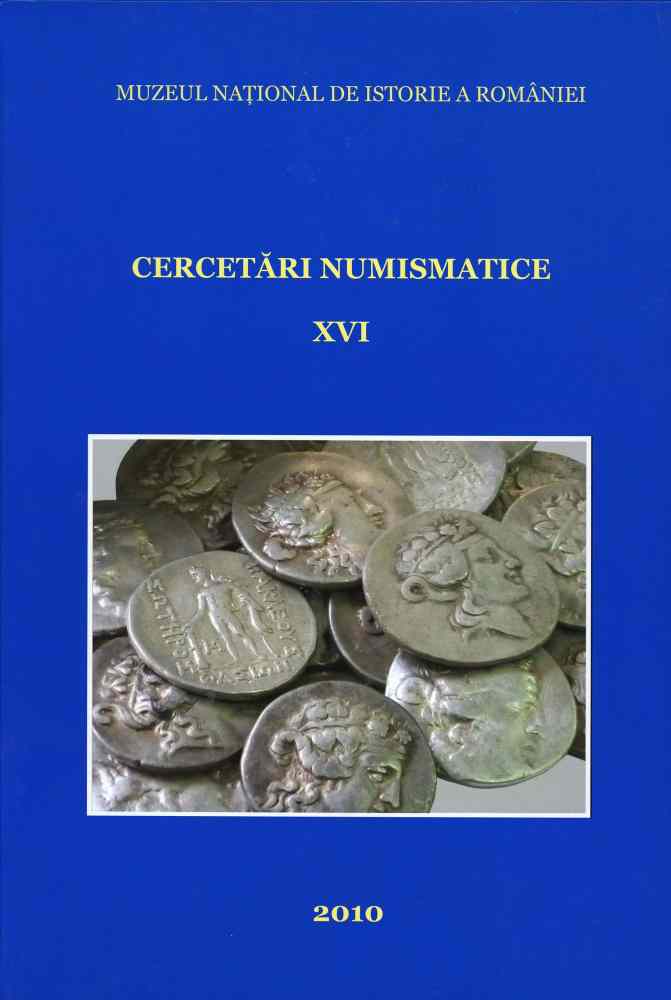
Unele observaţii privind prezenţa denarului roman republican în Dobrogea în lumina unor descoperiri recente / Remarks regarding the presence of Roman Republican Denarii in Dobrudja in the light of some recent finds
| Autori |
|
| Secţiunea |
|
| Limba de redactare | română |
| Descriptori |
|
| Excerpt | The author presents 55 new finds of Roman republican denarii. Many of them have been found on the territory between the Danube and the Black Sea in camps and settlements dating from the Roman period. The study analyzes different aspects regarding the chronology, spreading and diverse stages of penetration of the Roman republican denarius into the Dobrujan environment. The great number of Marcus Antonius type discoveries (27 copies) issued for legions during 32/31 BC stands out among the finds. The new finds are added to the previous corpus of coins issued during the II-I BC. The coins were brought by merchants, army and Roman republican and later on imperial administration into the Moesic territory. The specimens that compose the numismatic catalogue begin with years 179-170 and end with years 32-31. A number of 13 denarii were issued in the second century BC (23.63 % of total), while a number of 42 pieces of the same type (76.36 % of total) date from the first century BC. All issues are silver (100% denarii), one sample of serratus type (issuer L. COT in 105 BC.), other two (one copied from an original issued in the name of C. ANNIVS T.F.T.N PRO COS in years 82-81 BC in Italy and Iberia, the second of Marcus Antonius in a mobile mint following him are issued by casting (that excludes their issue in the official Roman mints) and three identified as fourre (issued in 90, 47 and 32-31 BC. in Rome (two) and a mobile mint for C. VIBIVS C.F PANSA , L. PLAVTIVS PLANCVS and ANT. AVG. IIIVIR R.P.C). Usually (regarding the denarii issued for Marcus Antonius) the specimens have numerous countermarks or other incised signs (discrete or rough, deeply imprinted in the metal) probably also for control, both on the obverse and the reverse. In the catalog are indexed 22 locations and Dobrogea passim. Most of them were found in areas of ancient settlements, with different data identified in the field or by archeological excavations specific to I BC.-I AD. centuries. Most of them are open settlements and small farms near urban centers (Noviodunum-Isaccea, Histria-Istria, Carsium-Hârşova, Ibida-Slava Rusă, Capidava, Durostorum-Silistra, Tomis-Constanta etc.) and fortified in the early Roman period. Recent as well as old finds of denarii associated with other artifacts provide a frame for a prosperous economic life during the second half of the second century BC. and the early first century AD., Roman administration had a critical role, first informal and then official after 46 AD. 40-50 years ago, based on current research, a number of assumptions have been put forward regarding on the function and circulation of the Roman Republican denarius in the Black Sea region. In many cases the archaeological and numismatic evidence seemed contradictory. One of the positive developments was the constant interest in the study of denarii circulating in Dobrudja, namely the Danube line (one of the most important means of communication between the two sides by the existing fords at Noviodunum, Carsium, Sucidava etc.) and the Pontus line, the old Greek urban centers Histria, Tomis and Callatis. What was not apparent back then was the commercial and military road between Axiopolis and Tomis, which is well represented by finds of Roman Republican coins. It was a fast connection between the Danube and the coast, and appears to have been extensively used in the first half of the first century AD. Diffusion benefited from intense human traffic present on the three roads in Dobrudja, and here we refer particularly to the first century AD. when the space was intergrated to a new province. This is all the more important because most of the Roman Republican denarii entered the Pontic province at a significantly later date after (at least 50 or even 100 years after they were issued), in a direction, hypothetically, coming from the south. In the first century AD., a market economy based on silver (denarii) was established, the majority being republican rather than imperial issues. Imperial bronze currency remained an important component of the market, plus another one that probably made large parts of the territories over long distances as in Asia Minor or Hispania. It appears that specialized research dedicated to monetary circulation in the territory of Dobrudja in the first half of the first century AD. is much better represented than we might be led to conclude based on the material published so far. Only in the numismatic collection of the Museum of National History and Archaeology in Constanţa, a cursory review of the old collection allowed us to identify a large number of coin finds (of silver, bronze and orichalcum) issued during the first half of century AD. (with places of discovery and other details), or other indication of Dobrudja (passim findings being integrated, but still located within the same province). The only explanation why such finds have not been published in articles, studies or books dedicated to this period, can be acribed to their state preervation, relatively poor but not as to make them illegible to the meticulous researcher. This is even more important since their omission from the analysis would lead to misleading conclusions, even if they do not pretend to be comprehensive. At least a few other few dozen coins cn be added to the old corpus, which are mosly finds from 1994-1995 (when, after our observations, it ended the documentation coming from archaeological excavations, acquisitions and donations which was at least superficially, from the perspective of the last work, dedicated to analyses of monetary circulation in Roman Dobrudja during I-III centuries AD.). Unfortunately not all items in the catalog have a graphic illustration. The fact that most pieces are not part of the numismatic collection of the Museum of Constanţa, and that some of them were part of private collections made this task more difficult. Most of these coins were available for study only for a short time; therefore it was very difficult to do this very important task of gathering all necessary details and photographic each specimen. Finally, the same phenomenon practiced in the three local mints of Histria, Callatis and Tomis between II-I centuries BC. seems to be resumed (we do not know exactly where the old Empire mints or deeper into) the process of coutermarking and the lack of bronze currency. Most likely it did not last much longer once the administrative, social, political and military changes demanded new approaches and required compliance in all its perceptible Roman imperial forms. There was no discussion of developments totally differentiated according to geographic location (either on the coast or in the center of the region either on the right bank of the Danube), which are sometimes slow and sustained in the second case. Unfortunately not all items in the catalog have a graphic illustration (or partially, see plate I, no. 1, 3, 10, 13). The new finds of Roman Republican denarii add the relative rich material already known from Dobrudja filling in with some other data of interest, the complex issue of its presence and cirulation. |
| Paginaţia | 21-41 |
| Descarcă fişierul | |
| Titlul volumului de apariție |


